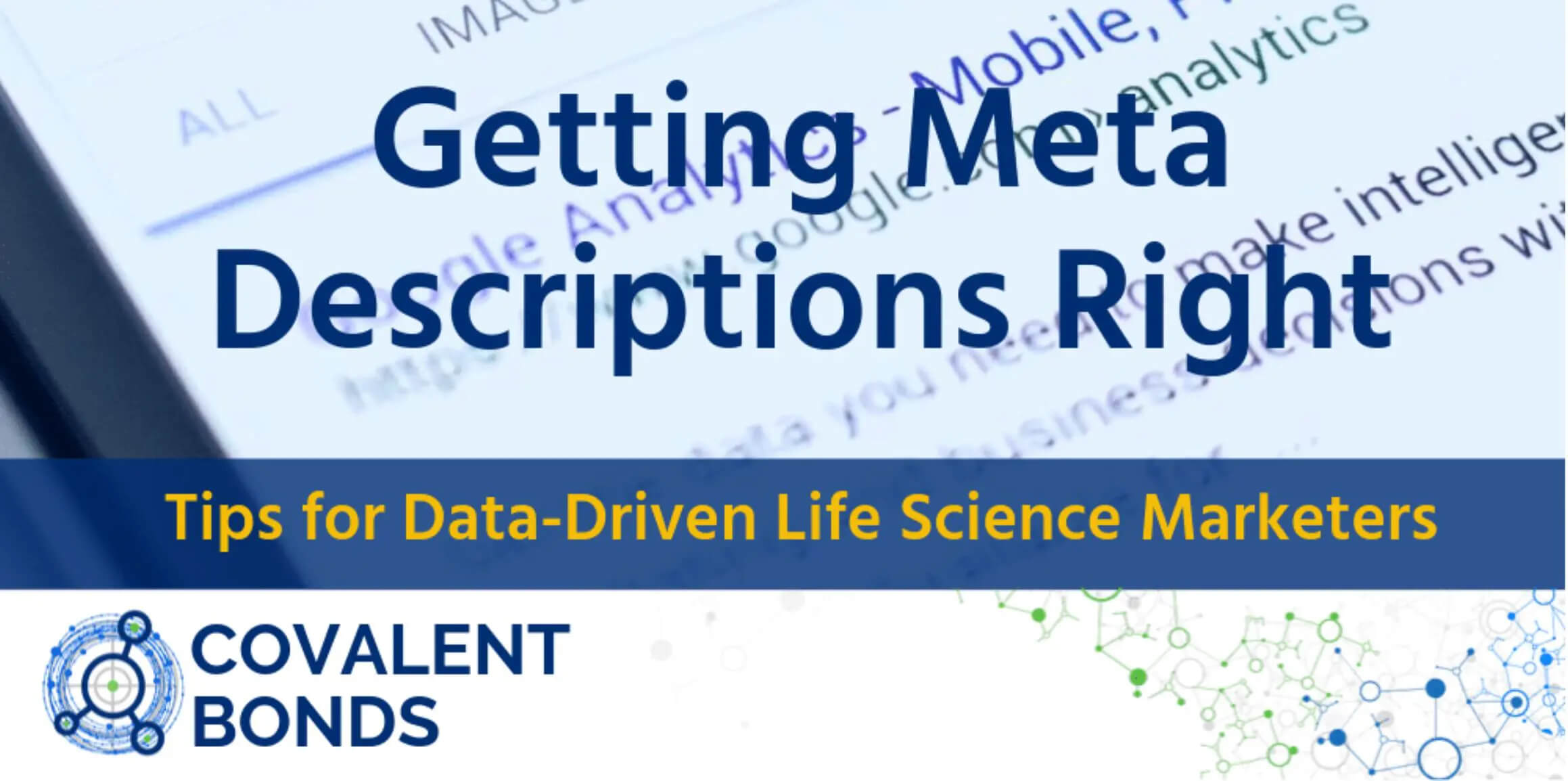A meta description is the text immediately under the URL in search engine results. Essentially, the description helps readers to decide if the webpage will answer their question. But those “readers” aren’t limited to people. Google bots read everything too, to help determine the relevance of the content for answering searchers’ queries. For this reason, it is important that the meta description both describes the content but also entices the searcher to read it.
Meta descriptions are often written early during website development and rarely thought of again. This limits the SEO potential of each page on the site. Optimization begins by looking at the data.
Use data to answer these questions:
- What words are people using when they search for your products/services?
- Do those words appear in your meta description for that page?
- Does the description accurately set user expectations for the page?
Resources for Meta Description Research
- Research your own keyword data from Google Search Console, Google Analytics, and Google Ads (formerly AdWords).
- Online Tools like SpyFu, SEMrush, and BuzzSumo offer broader perspectives to keyword trends. Get statistics about search volume, related keywords, and your competitor’s use of keywords. These tools also offer life science marketers clues on words that could be broadly applied and confuse bots.
- Example 1: The term “Assay” is used by both biologists and chemists, however the meaning varies. One group thinks about ELISAs, while the other thinks about HPLC runs.
- Example 2: “Protein concentration” is used broadly by life science companies. Unfortunately, the food industry also uses protein concentration when talking about protein bars, protein shakes, etc.

- Feedback from customers can play an important role. Consider what language they respond to when you speak to them and integrate these into the product page.
Matching Meta Descriptions with Search Intent
The meta description connects the search keywords (and the searcher) to the site. As a marketer, you need to concentrate on making your site the obvious choice – on making that connection seamless. This can be additionally challenging in the life science marketing world. It is impossible to differentiate, credentialize, and position your product/service in less than 156 characters. This is where data really helps you.
Create the meta description by distilling the page’s thesis. On every product webpage, include a short positioning statement that explains what the product is, who it is for and how it benefits them. The data empowers you to rework the meta description to better connect with Google and your specific custom audience. Work to develop a connection between the things people search for and that positioning statement. Look at the questions your searchers are asking, and do your best to show you have the answer. Measure effectiveness of your changes, and remember to keep optimizing.
Want to know what other questions marketing data can answer? Contact Covalent Bonds to learn more.



.png)
